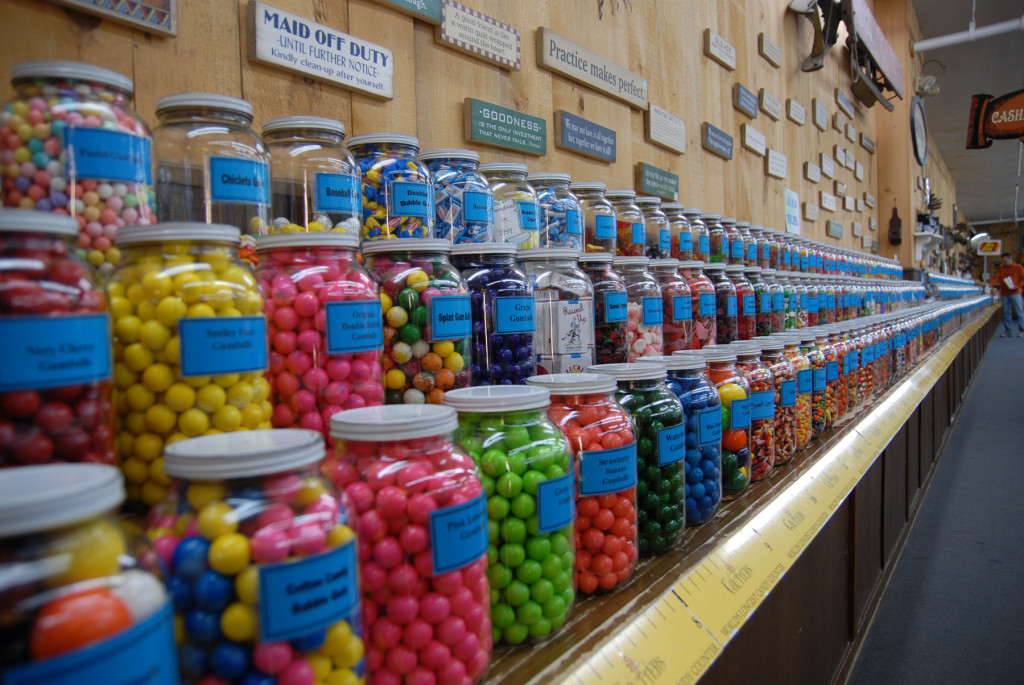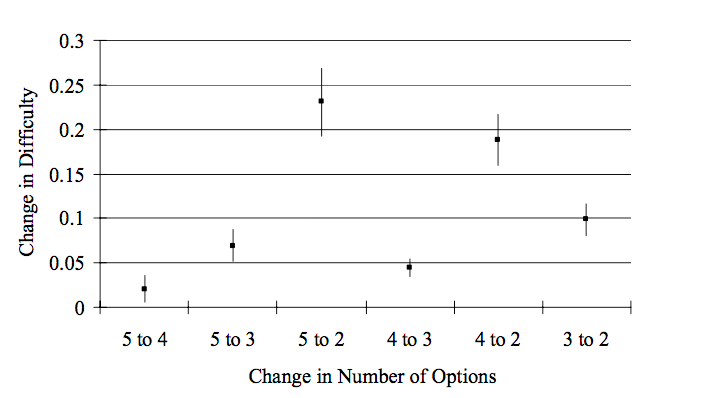We all want choices. In general more choices represents more freedom, specifically more freedom of decision making. And in this day and age, the internet has provided us with seemingly endless choices for everything. There are over 13,044 different men’s shoes choices on Zappos. Netflix offers over 100,000 titles. And somehow this makes us unhappy. Why?
Think about the last time you had to had to order off a menu with 5 pages of choices vs. a simple one-page menu. Which took longer to order off of? Did the amount of time spent evaluating menu options change how much you enjoyed the meal? When discussing the idea of choice, people often cite Sheena Iyengar’s jars-of-jam experiment, where shoppers who could sample more choices of jam were far less likely to buy a jar than those presented with fewer flavors.
Obviously, having no choices at all can make life unfulfilling. But Swarthmore College psychologist Barry Schwartz contends that “US consumer options have moved beyond the happiness threshold, because too much decision making makes us unhappy.” People faced with too many alternatives waste time pondering insignificant purchases and then are apt to second-guess their decisions.
More Data = Less Helpful
In a world of big data, with thousands of streams of new information feeding in from every device, every minute, we have stockpiles of data to analyze and draw conclusions from. But evaluating more data doesn’t help. “The more information people were given about different brands of beer or cereal, the worse they did in terms of choosing well,” says Jacob Jacoby, a marketing professor at New York University’s Stern School of Business, who is known for demonstrating that too much choice is a bad thing. Having too many options eventually leaves us unhappy with any choice we make.
Why Permanent Decisions Make Us Happier
David Myers, author of The American Paradox: Spiritual Hunger in an Age of Plenty, points to a study showing that people are happier with irrevocable choices. These choices make us happier because we rationalize them (because psychologically we work harder to rationalize what we cannot undo) which in turn makes it harder to conduct post-choice comparisons.* People will work harder to rationalize irreversible choices/decisions such as buying a shirt from a store with a no return policy.
Standardized Tests and Distractors
Multiple-choice test questions are a mainstay of achievement testing in schools. University of Minnesota’s Michael C. Rodriguez found that more multiple choice questions (called “items” in the assessment community) with 3-option answers (Answer A, Answer B, and Answer C) can be administered than 4- or 5-option answers per testing time while improving content coverage, without detrimental effects on psychometric quality of test scores. Moving to 5-option answers increases the difficulty of the question without providing better assessment feedback. Researchers have endorsed 3-option items for over 80 years with empirical evidence. Appropriately, the extra wrong answers that appear on multiple choice tests are called “distractors.”
The Reality of Choice
Brilliant academics aside, writer Chuck Klosterman explains it best:
In the present tense, we always want the maximum number of alternatives; in the short term, choice improves our lives, and we’re completely aware of that. The problematic rub is that – over time – choice isolates us. We have fewer shared experiences, and that makes us feel alone. The proliferation of choice makes us feel vaguely alienated, and that makes us depressed. But this relationship is not something we’re conscious of, because it seems crazy to attribute loneliness to freedom. We just think we’re inexplicably less happy than we should be. -Chuck Klosterman
*Decisions and Revisions: The Affective Forecasting of Changeable Outcomes, Gilbert & Ebert


